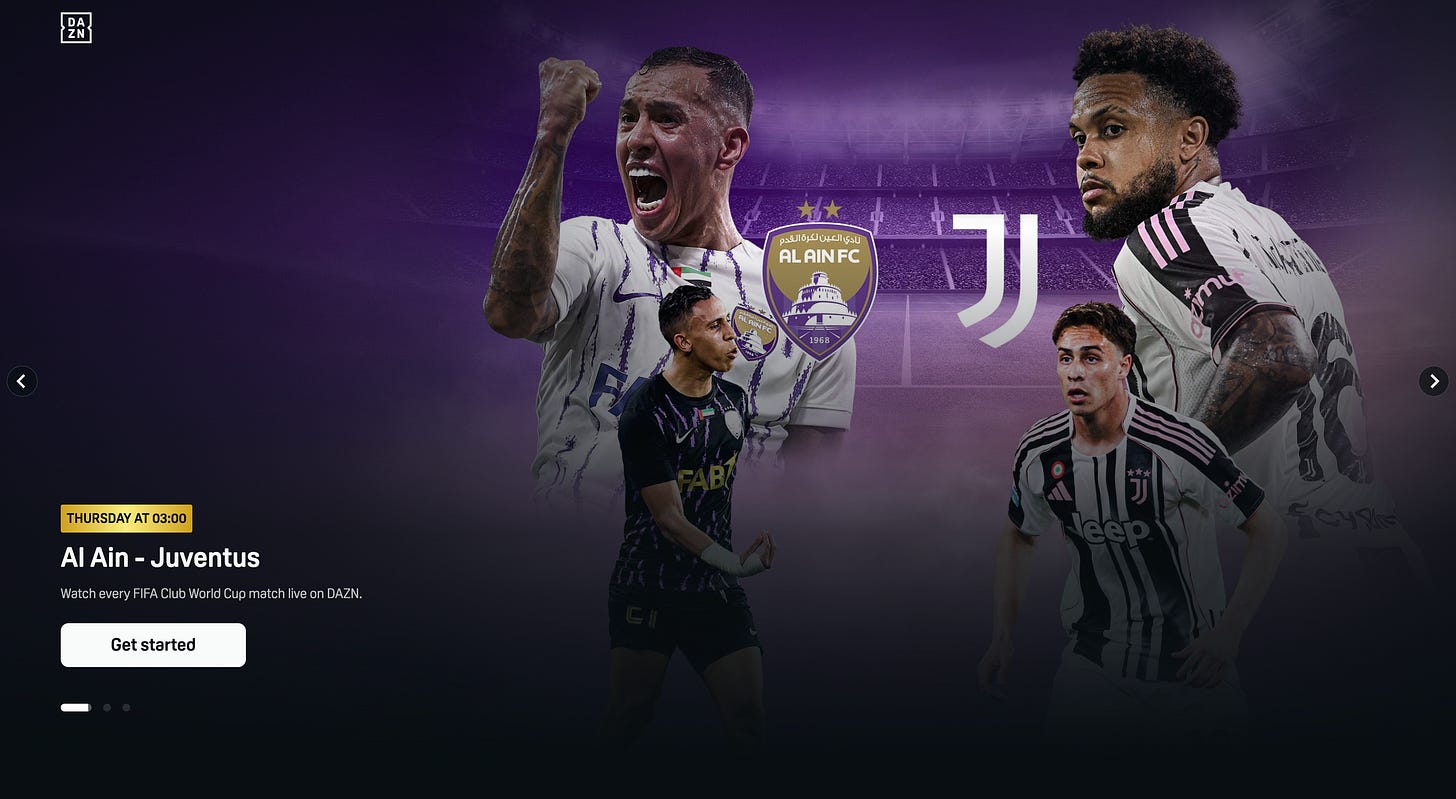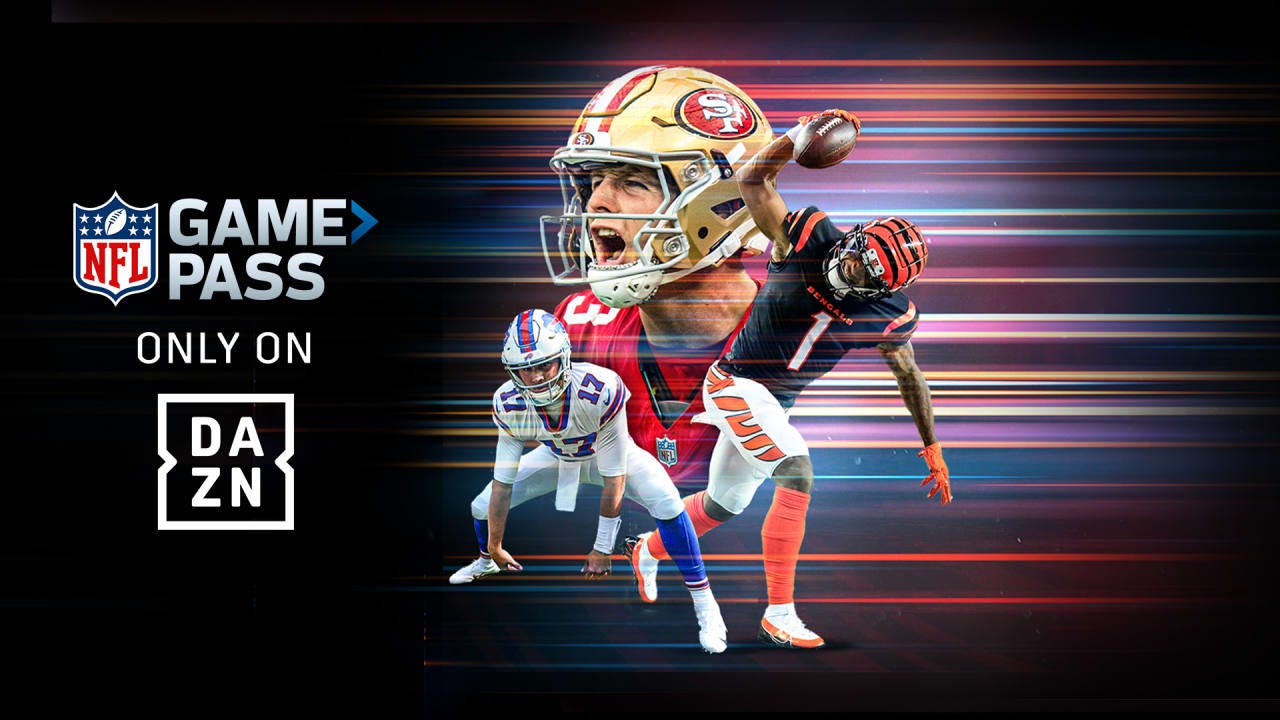DAZN takes the wheel: why FIFA just handed over FIFA+—and what might come next
FIFA just turned its own streaming experiment into a global home by letting DAZN drive—proof that in 2025 the smartest play is partnership, not going it alone.
1. A quick rewind
On 14 June FIFA and DAZN revealed a long-term pact that puts the sports streamer in charge of FIFA+, repackaged on the DAZN platform as “The Home of Football” [1]. In plain English: FIFA is outsourcing the tech stack, user acquisition and day-to-day operation of its direct-to-consumer (DTC) service to a partner that already lives and breathes subscription OTT.
The partnership launches in public view at the expanded 32-team FIFA Club World Cup, now running across the United States (14 June – 13 July). DAZN is showing every match, a daily studio show called “The Press,” and shoulder programming in 15 languages [1][2].
2. Why FIFA needed help
FIFA+ arrived with fanfare in 2022 but never broke out of the rights-holder bubble. Internally it became an expensive experiment—one FIFA reportedly explored funding with a US $2 billion raise in 2024. Usage was modest, and the role of the platform inside FIFA’s wider media-rights strategy was fuzzy. By mid-2025 the governing body faced a choice: double down on building a global consumer business, or partner with someone who already has the pipes and the customers. It chose the latter [3].
3. Why DAZN said “yes”
Inventory at scale. DAZN has bet US $1 billion on exclusive worldwide rights to the Club World Cup [4][2]. Owning FIFA+ turns that one-off tournament into a year-round football hub packed with 150+ men’s and women’s leagues, archives and originals.
Global funnel. All 63 Club World Cup games are free to stream on DAZN after a simple registration. The company’s playbook is obvious: acquire names and emails in June/July, convert the most engaged viewers into paid subscribers once the dust settles.
Tech synergy. DAZN’s existing multi-language workflow, live-data overlays and interactive FanZone feature drop straight into FIFA+ without another RFP cycle.
4. What changes for fans and rights-holders
Before: FIFA+ lived on its own URL and apps, with low discoverability.
From today: It appears as an integrated tile on the DAZN homepage, with the same login and payment rails.Before: Live rights were patchy and varied by federation.
From today: Federations can drop matches straight into a global app, tapping DAZN’s ad-sales and payment footprint.Before: Original content was sparse between tent-pole events.
From today: A daily news service launches after the Club World Cup, bolstered by shoulder programming from DAZN Studios.
For smaller leagues in “dark markets,” the upside is immediate reach; for major broadcasters, the jury is out—some will see DAZN as a collaborator, others as a new competitor.
5. The open questions
Economics. DAZN absorbs operational costs and guarantees reach, but how will revenue share work for federations? Details were not disclosed.
Cannibalisation. Will national associations still sell traditional rights if some games sit on a global, free-to-watch service?
User experience. DAZN’s app is built for events, not endless library browsing. Re-skinning it into an always-on “Home of Football” will test its product team.
Player-welfare noise. The Club World Cup expansion already faces criticism for fixture congestion [4]. More football behind another paywall could sharpen that debate.
6. How to read the move
For FIFA
This is a pragmatic retreat from running a streaming platform solo. By tapping DAZN’s 200-market footprint, Zurich sidesteps infrastructure headaches and finds a quick answer to sceptics asking what problem FIFA+ was really solving.
For DAZN
It’s a positioning coup. In one stroke the company becomes the default entry point for everything from Serie A to Solomon Islands qualifiers, while reinforcing the message that it’s more partner-friendly than the big tech platforms.
For the wider industry
The partnership underlines a 2025 truth: aggregation is cool again, but now the aggregators are specialist streamers rather than cable operators. Expect copycats—UEFA’s ElevenSports heritage makes it an obvious candidate—and renewed chatter about whether sport needs its own “Spotify moment.”
7. Bottom line
Handing FIFA+ to DAZN is less a moon-shot innovation than a tidy piece of crisis management wrapped in upbeat PR. Yet if DAZN can convert the Club World Cup spike into sustained fandom—and if FIFA resists the temptation to meddle—the alliance could finally give global football the coherent digital home it has lacked.
Stay tuned: the real score won’t be measured in goals this July, but in monthly active users come September.
Sources
FIFA press release, 14 June 2025 – inside.fifa.com
Boardroom analysis: “DAZN’s Club World Cup play” – boardroom.tv
Inside World Football: “FIFA seeks $2 bn for FIFA+ expansion” – insideworldfootball.com
Reuters: “DAZN’s $1 bn Club World Cup deal and player-welfare concerns” – reuters.com
What the FIFA+ move tells us – and what the NFL’s Game Pass story already showed
Keep reading with a 7-day free trial
Subscribe to A guy with a scarf to keep reading this post and get 7 days of free access to the full post archives.







